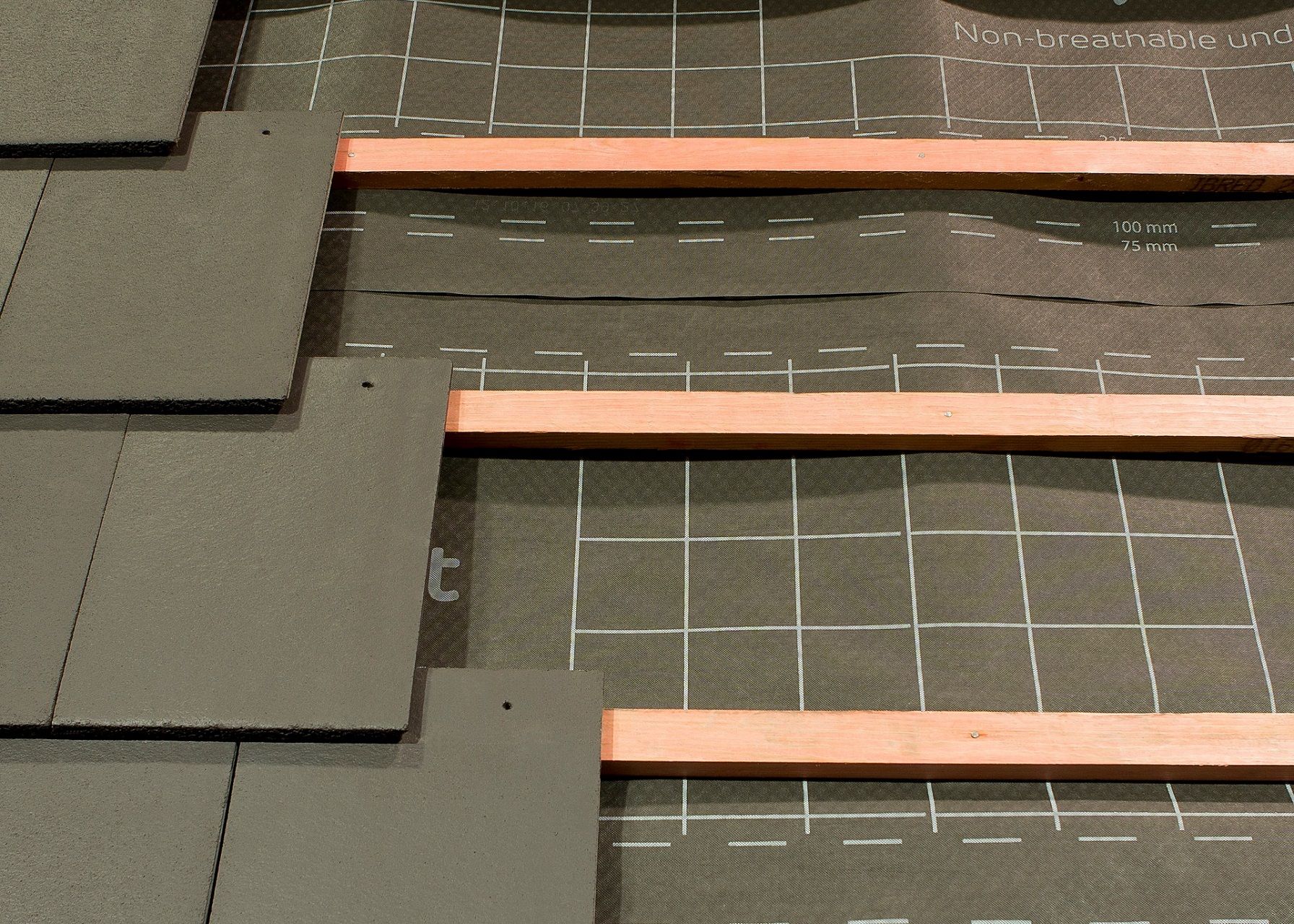
Let us 'pitch' this to you...
Published on November 7, 2018
Posted in Advice & Reviews
by
3 min read
Everything we do on a pitched roof is generally designed to achieve two outcomes - to keep the tiles on and water out. The starting point for this is the roofs pitch. It’s one of, if not the most important, measurement when a roof is designed, specified and installed.
Keeping the tiles on At a low pitch the weight of the tile will help keep it in place, however when the pitch is increased the resistance is decreased as the pull of gravity encourages it to slide down the roof and the tile is forced to hang from its nibs supported on the batten. Most tiles will hang at a 90o pitch (i.e. vertical), but stronger fixings maybe required to hold those tiles in place.
Keeping the water out Tiles and slates are laid in a way that controls the flow of water down the roof and prevents water from leaking through the junctions between the tiles. Many roof tiles have interlocks formed on their left edge which are essentially water gutters designed to aid this process. The pitch of the roof will control the speed at which the water travels down its surface. At a high pitch, the water will travel quickly and care must be taken to ensure that the guttering at the eaves can deal with volumes of water. At a low pitch, the water will move more slowly, giving it time to move sideways via capillary action across the tile. If the tiles have not been laid correctly water can flood interlocks and seep between tiles or slates - commonly on longer rafter lengths and particularly with flat interlocking tiles. In extreme cases wind driven rain can be blown back up under the headlap causing excessive water. Special care must be taken when dealing with double lap products such as plain tile and natural slates. They have no water channel and do not interlock. Instead they are laid in a staggered formation, called broken bond, with alternate courses shifted over by half a tiles width. Meaning that water falling between the tiles lands in the centre of the tile beneath. To ensure weathertightness the tiles must be laid double lap i.e. one tile covers the next two tiles beneath, rather than just one tile over one, or single lap, which is how an interlocking tile is laid. Double lap and staggering of tiles and slates is effective, but only to a point. At lower pitches (below 35o for plain tile and 25o for natural slate) the water will flood the outer roof covering as it is moving too slowly down the roof. Every roof covering will operate at a minimum and maximum pitch and should never be used outside those recommendations. We want to keep the tiles on and the water out and while we might like the look of our natural slate extension laid at a 15o pitch, we will not like the cost of the repairs when the slates leak and the roof is in need of a complete re-roof. There are many tiles out there designed to work at a low pitch, some as low as 12.5o so you do have options. Always check your roof pitch and always follow your manufacturers recommendations for their tiles or slates. Remember tiles on and water out!